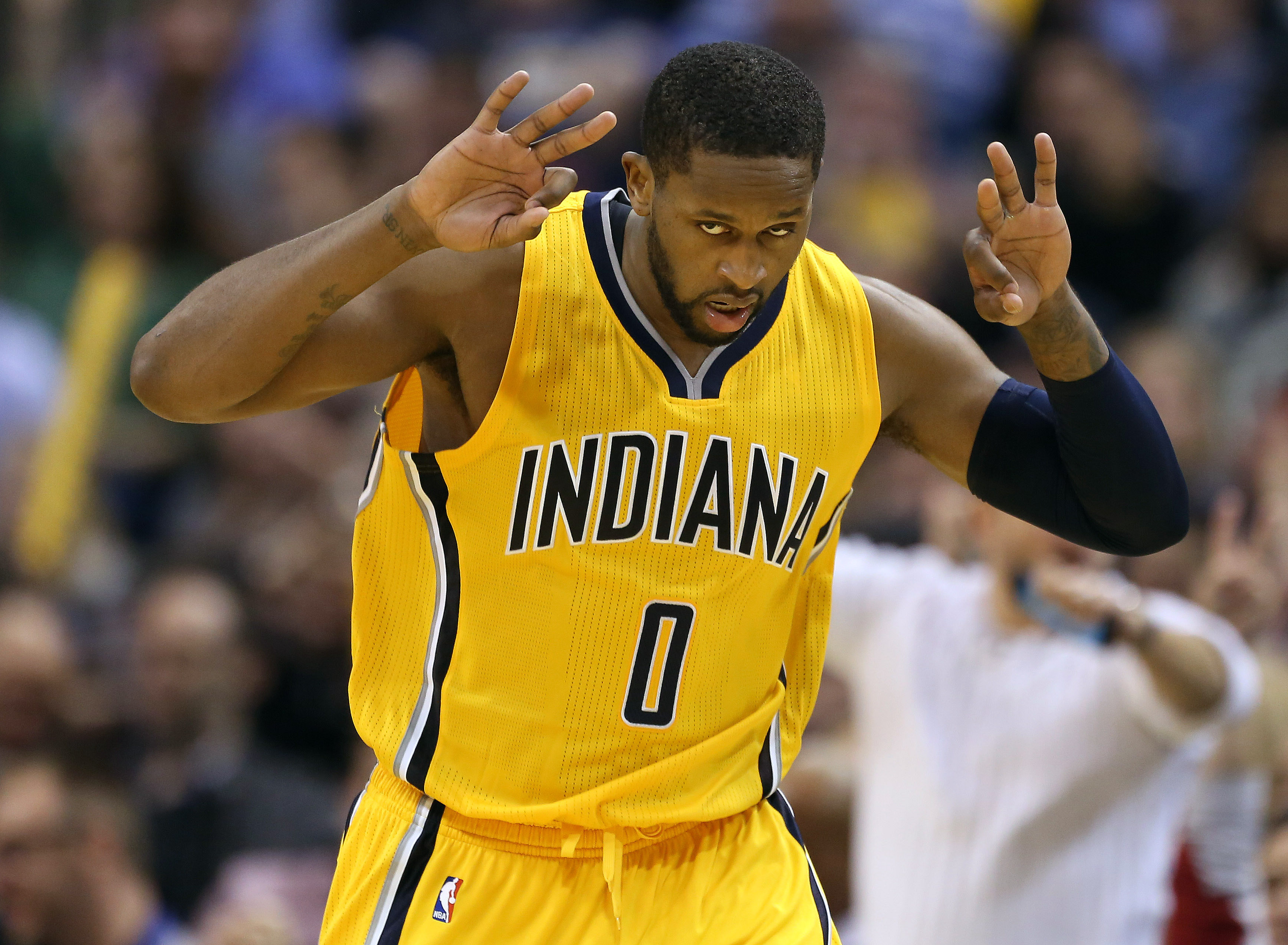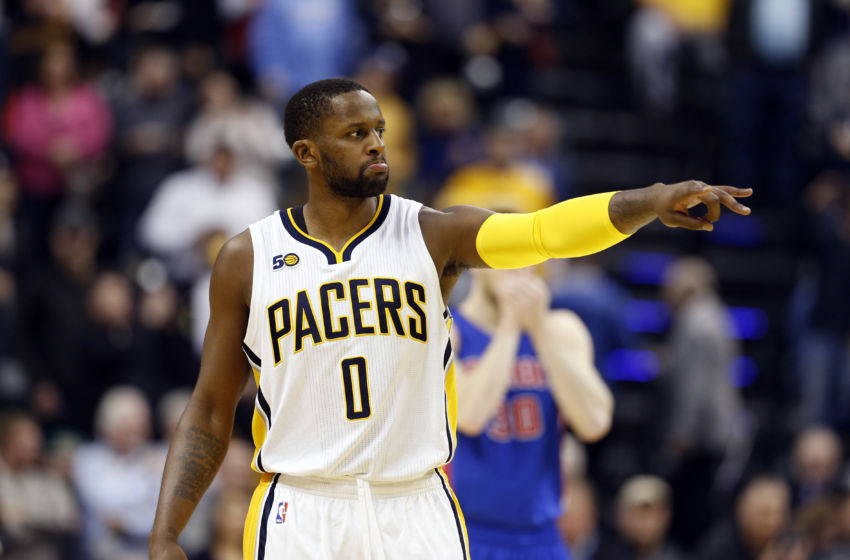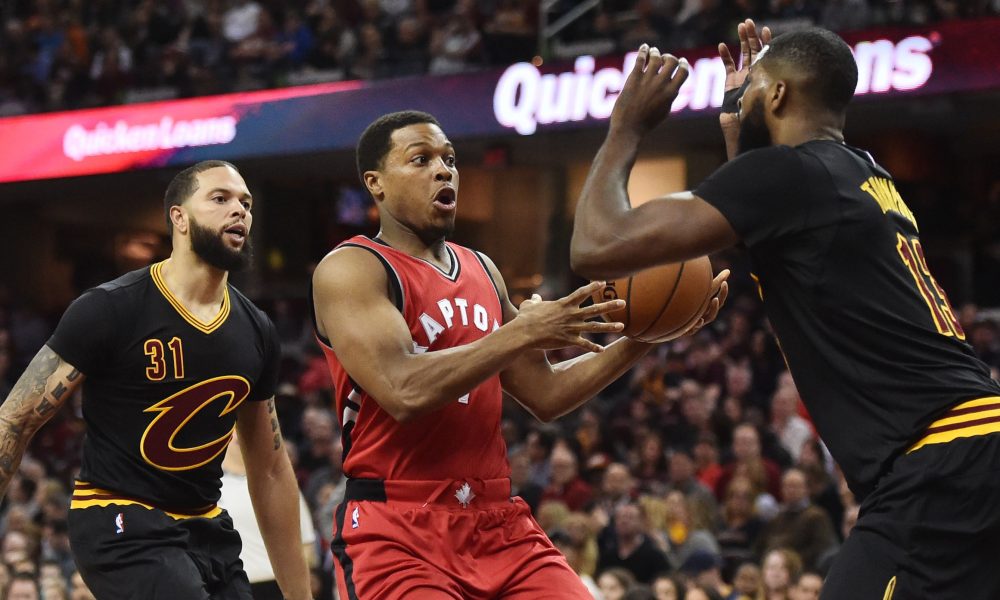Do you miss Terrence Ross? Whether you mourned the loss of the blistering flamethrower scorer or celebrated his passage from the Raptors should be indicative of whether you will appreciate CJ Miles. Miles is a knockdown shooter who does little else on the court. Miles is Ross, but better; he almost never plays away from his strengths. So what will the Raptors get from Miles? The advanced stats from his 2016-17 season show that his skills will fit as snugly into the Raptors’ offense as a kitten into a cardboard box. Note: all stats are drawn from nba.com and the 2016-17 NBA season.
MORE: Report & reaction – Raptors to acquire C.J. Miles in sign-and-trade
Miles is a low-usage role player who knows his job and does it well. He almost never tries to go it alone in isolation (1% of his plays) and rarely turns the ball over. Even as a relatively low-usage player (18.3%, identical to Cory Joseph, the outgoing player sent to acquire Miles), Miles turned the ball over less than almost anyone in the league. Among rotation players, he had the fifth-lowest turnover ratio (turnovers per 100 possessions) in the NBA, at 5.2. For comparison’s sake, Patrick Patterson had the lowest turnover ratio on the Raptors, at 7.2. Ross clocked in at 7.3.
As an explanation, it’s easy to keep possession of the basketball when all you do is shoot; Miles doesn’t ever really pass the ball (averaging 16.7 passes per game, identical to noted black hole Terrence Ross), which fits right into the Raptors’ 2016-17 scheme! Tired of watching Patrick Patterson pass instead of shooting the open 3? Prepare to be jolted awake.
Even better, Miles hit over 50% of his corner 3s on the season (ridiculous!). Correspondingly, Miles is a devastating spot-up shooter. A huge 32.8% of his plays on the season came off of spot-ups, in which he scored 1.34 points per possession, good for 97.9 percentile in the league. That’s juuuust ahead of some guy named Steph Curry, who scored 1.33 points per possession off of spot-up plays.
Miles is not an excellent shooter coming off of screens, only scoring 0.88 points per possession despite 26% of his plays coming in that flavour. However, DeMar DeRozan and Kyle Lowry draw so much attention with the ball that Miles should have enough space on spot-ups to not need Kyle Korver-esque flurries of off-ball screens to get open. Instead of watching Miles run around screens like Terrence Ross used to, expect to watch Miles stand lazily in the corner, only to rain fire after another Raptor drives into the paint. On simple catch-and-shoot plays, Miles shot an exceptional 42.6% from 3. Those plays should be more available to Miles than ever this upcoming season.
As evidence of how well Miles will work with DeRozan and Lowry, Miles was incredible last season when playing with Paul George; the two-man lineup led commonly used Pacers’ lineups in net rating, at 4.6, and offensive rating, at 110.1. When playing without George, Miles’ play dropped off considerably, as he took fewer 3s and made them at a much lower rate. Miles needs to play with a ball-dominant scorer in order to be effective. With the Raptors, Miles will have 2 stars creating space and feeding him the ball so he can do what he does best. He should thrive like a hipster in Seattle.
CJ Miles is disastrous at creating his own shot, shooting 29.7% from 3 on pull-ups. His shooting percentages crater after 1 or more dribble or 1 or more seconds of touching the ball. He is not an offense unto himself, and he needs someone to create his space for him. Miles moves slower than the security line at the airport, as he ran 4.30 miles an hour on average while playing offense. In comparison, noted runner Joe Ingles ran 4.30 miles an hour on offense, and the immobile Brook Lopez ran at the blistering pace of 4.31 miles an hour. Maybe his inability to create space due to being slow as hell is why Miles is such a bad shooter when coming off of a screen. Miles will not make many plays, but he won’t try to make plays. He will hit corner 3s.
Miles will rarely touch the ball on offense for the Raptors, and he will almost immediately shoot after the ball hits his hands. In fact, he was among the top 15 players in the league in points per touch (ahead of studs like Paul George and Anthony Davis). This makes sense for a guy who rarely touches the ball, but almost always shoots it (and quite accurately) when it finds his hands.
So what is Miles bringing to the Raptors’ offense? He is an elite shooter after someone passes him the ball, but not in any other situation. He immediately becomes a basketball disaster if he dribbles, passes, holds the ball for 1 second, or really even moves much at all. Despite those weaknesses, CJ Miles fits as well as your favourite jean jacket into the Raptors’ 2016-17 offensive game plan. He will not bring about the much-vaunted #culturechange.
However, one statistic warms my heart more than all the others, especially after repeatedly jolting awake from cold, sweaty nightmares about bricked, wide-open Raptors 3s in the playoffs: CJ Miles shot a mammoth 46.9% on wide-open 3s. Klay Thompson shot 46.8%.



